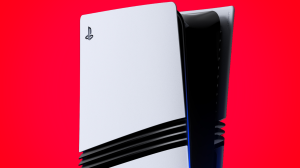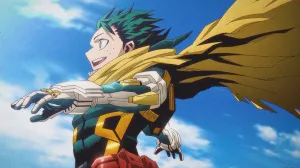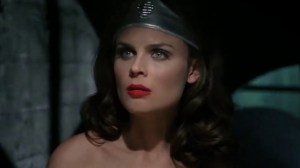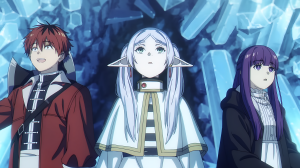
There isn’t a more interesting character in comics right now than Valiant Entertainment’s Bloodshot. The once-unkillable soldier now finds himself painfully mortal, struggling with arch-nemeses like addiction and depression with the usual round of trigger happy villains, all while resisting the temptation once again become a unstoppable killing machine. Oh, and he talks to visions of an animated version of himself, Bloodsquirt.
Videos by ComicBook.com
But that’s just the entry-level stuff in Jeff Lemire’s increasingly compelling Bloodshot epic, which is transforming the character from a super-powered Rambo into a relatable hero with feet of clay. Bloodshot’s journey, both internal and external, continues in Lemire’s second arc, “The Hunt.” The story finds the man beneath the nanites, Ray Garrison, continuing his hunt for The Bloodshot murderers while also warring with the killer inside of him. It’s this deeper “hunt” for Garrison’s soul that makes Bloodshot Reborn one of Valiant’ best titles, a deep, psychological thriller that doesn’t shy away from all-too familiar themes like depression, guilt and addiction.
With The Hunt on the horizon, Lemire chatted with ComicBook.com about Ray’s struggles, incoming artist Butch Guice (Captain America), and just where the idea for Bloodsquirt came from. Plus, Valiant has supplied an exclusive preview of Guice’s art from Bloodshot Reborn #7, along with covers by Mico Suayan, Kano, and more!
Your upcoming arc is called “The Hunt.” So, who is the hunter, and who is the hunted? It looks like those roles may not be a clear-cut as it seems, with possibly several people carrying those roles.
Lemire: Yes, there is a big shift in this arc. So far Ray/Bloodshot has been working under the assumption that he alone can “sense” the nanites and collect them. He may have been wrong.
And to that end, what can we learn about Ray Garrison as a hunter, as opposed to him as prey? How does his character change when he transitions between the two roles?
Lemire: Ray has a hell of a lot of training. He is a very, very dangerous man. But he is now also very bogged down by guilt, anxiety and a lot of other psychological factors that may interfere with him being able to function like he did when he was just Bloodshot. So now it’s a matter of who wins that internal war? Ray Garrison or Bloodshot? And what happened to all those nanites if he loses?
One of Ray’s greatest struggles in the first arc was his addiction to alcohol and drugs. Will those vices still haunt Ray in The Hunted? Will he ever be able to move past them?
Lemire: I don’t think anyone who has struggled with addiction and substance abuse problems ever moves past them. This is something Ray will have to live with for he rest of his life. Which may not be that long anyway if things don’t turn around.
It seems that the new characters you introduced in the first arc–Festival and Hoyt–are playing an increasingly vital role in Bloodshoot Reborn. Should readers plan on seeing them more as co-stars as the series develops? How will their story continue to weave in and out of Bloodshot’s?
Lemire: Oh yeah. I love them. My absolute favorite characters to write. They could play a role in the series for a long time if they don’t die at the end of “The Hunt.” Festival in particular is important to me.
What are the defining differences between The Hunt and your premiere arc? How has Bloodshot grown as a character since the first issue of Bloodshot Reborn, and how will that growth influence his actions in his second major adventure?
Lemire: Well, the more nanites he absorbs back, the less human he becomes. The more the “old” Bloodshot threatens to take over. But, what we will see in “The Hunt” is that Ray is also greatly influenced by those around him. So the people he encounters may end up shaping him into something that is neither the Ray Garrison we saw in issue #1, nor the Bloodshot we saw before our series began.
What is it like writing a character saddled with so many physical, emotional, and psychological scars? How do you write a character that’s so defined by tragedy, without making his story feel completely hopeless?
Lemire: I feel at home with Ray. I really do. I have no problems writing characters like this, in fact I find it therapeutic in a way. To go to really dark places. As for whether it’s hopeless for Ray or not…well, I’m not a firm believer in torturing characters just for the sake of it. I’m taking Ray and Bloodshot somewhere very specific. And the darkness along the way is necessary to get there.
What makes Butch Guice the right artist to tackle Bloodshot? How are you formatting your scripting to suit his specific art style?
Lemire: I think Butch is a legend. I grew up reading his comics. He is an impeccable storyteller. So clear and concise. He makes it looks effortless. Love working with him. I don’t think I had to dramatically change my scripting style at all. His storytelling style suites my own very well.
Finally, I have to ask about Bloodsquirt. Where did the idea for this character come from, and what is he supposed to represent in Ray’s mind? Will continue to be a fixture of Bloodshot and his metal status quo moving forward?
Lemire: Bloodsquirt started as a joke between [Valiant Editor-in-Chief] Warren Simons and I. I kept telling him I was going to sneak this demented little version of Bloodshot into the book. I just loved the idea of this character that is Ray’s id manifested. Also he really represents violence in pop culture and in comics in general. A cartoon maniac. We have not seen the last of The Squirt. And neither have other characters in the series either.
“The Hunt” begins in Bloodshot #6, which hits comic shops this September.








